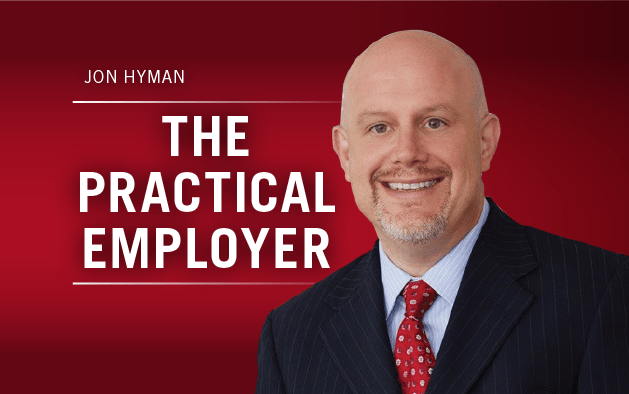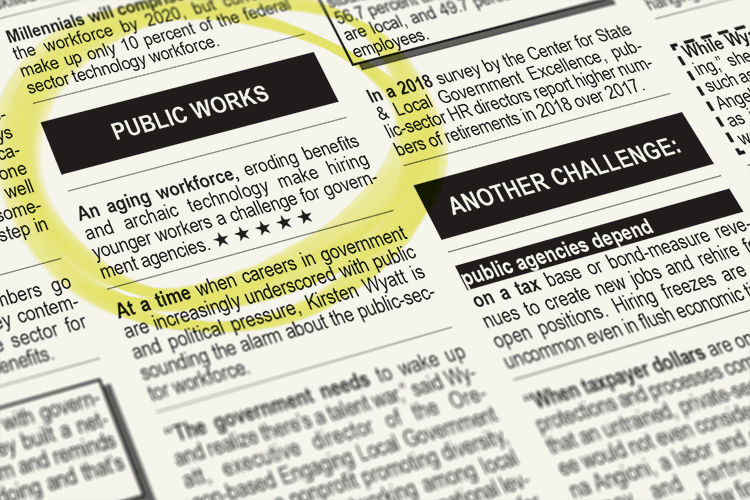The H-1B visa approval rate dropped nearly 30 percent from 2016 to 2017, challenging employers and recruiters to find the right talent. Advanced technology, like artificial intelligence, can help.
![]()
Many organizations, especially those in technology, higher education and health-related industries increasingly depend on highly skilled non-U.S. candidates to fill positions left vacant due to a lack of experienced or interested domestic workers. A survey by Envoy Global, an immigration services firm, found 59 percent of companies planned to hire more foreign employees at their U.S. offices in 2018, which is up from 50 percent in 2017 and considerably higher than the 34 percent in 2016.
The reason firms are looking abroad: The U.S. is facing a significant skills gap, especially in STEM-related fields. Generational and technological shifts have created new roles, like mobile developers and programmers, that require significantly higher levels of technical or digital knowledge. Other countries tend to have higher quality math and science programs, and this rigorous education produces attractive candidates to fill the hundreds of thousands of new jobs across the United States.
The proposed federal changes to H-1B visa issuance, which include tightening qualification requirements, such as increasing minimum annual salaries, reducing the three-year duration, implementing more rigorous interview processes and limiting visas for family members and more, will make it even harder for workers to get approval to work here in the U.S. In an already extremely tight labor market, these changes add complications for hiring teams to be effective in their chase for talent. Few organizations are immune to the pressures of the H-1B crackdown. According to Envoy Global, 85 percent of U.S. employers surveyed say they have already felt impacts of the shifting immigration system.
Context Around the H-1B Challenge
Having worked across a variety of industries in my career, at privately held companies where visa sponsorship was not common as well as at Fortune 500 companies with and without visa sponsorship programs, I’ve found the immigration challenge is twofold. First, companies often don’t have the infrastructure and budget to support individuals with H-1B visas, since acquiring sponsorship is a long and capital-intensive process that requires involvement from outside immigration counsel. Second, the visa quota set by the government tends to run out so quickly that unless a company proactively applies for a certain number of visas a year in advance, it is left out of the game entirely.
The other element to the H-1B issue that companies must, but often don’t, think about is the well-being of the future employee. When a candidate emigrates to the U.S. to take the job, they must relocate, often with their families, which costs money and requires navigating cultural barriers.
Hiring organizations must decide if they will prepare these individuals with cultural training and help them find communities and schools for their children or leave them to their own devices. Figuring out where to help foreign workers and where to draw the line is never easy as there’s a natural inclination to help; providing support often takes a lot of time and effort from the organization.
U.S. companies are also facing geographic difficulties in sourcing talent. For hiring managers, dealing with restrictions of a candidate’s citizenship reduces the likelihood of finding the best person for the job. It may be that the perfect coding guru or IT specialist is not an American and needs sponsorship to work in the United States.
With tightening qualifications for H-1B visas, recruiting and attracting the right talent gets more difficult, and in some cases is seemingly impossible. Even when looking inside the U.S., IT jobs are easier to fill in metropolitan regions like New York and Silicon Valley. Companies based outside of major urban center locations are having a hard time attracting the talent they need without large hiring budgets and third party recruiting firms with high retainers to help fill those jobs.
Making concessions on skill requirements or a candidate’s experience based on low talent availability is never ideal. When applied on a larger scale and for contract or short-term roles, this brings a completely new set of challenges for hiring teams.
Some of these challenges include higher budgets and increased bids to reach the right level of talent; an inability to fill projects and requisitions quickly; and having to delay projects because the right domestic workers don’t exist or are hard to attract.
It’s also important to note that an HR team’s regular responsibilities don’t stop during the recruiting process, which can lead to either putting projects on hold due to constrained resources, or stretching employees too thin as the company tries to cover the work, which doesn’t create a positive work environment.
When restricted to the U.S. labor market, it can take a long time for companies to find qualified candidates. There have been many times in my career where my team has had to repost job openings several times before we found someone to fill the position.
Typically, teams can fill most positions within 90 days, but STEM roles can take up to six months or longer. In these cases, settling for a candidate that doesn’t have all the ideal capabilities, education and experience is unfortunately common because there’s a dire need to fill the role.
How AI Can Help
The tightening labor market will continue as unemployment rates hit all-time lows, coupled with the proposed H-1B rules. Human resources, consulting and professional services, IT, engineering, management, clerical and administrative gigs are all increasingly being sourced from outside the United States and the changes would affect these areas the most.
Being proactive and staying on top of legislation changes to understand how they impact the organization is the minimum baseline for success, as it helps companies proactively plan their workforce. However, this still doesn’t solve for filling roles that become vacant unexpectedly — so organizations also need a hiring strategy that utilizes technology and contingent labor to fill critical worker voids.
For example, AI mechanisms are aiding hiring managers in bringing in the right talent by making it easier to find, filter, interview and vet candidates on a variety of hard and soft skills. The matching capabilities bridge the skills gap by helping teams find domestic workers when H-1B visa rules make it tough to source abroad. The depth and breadth of candidate screening enabled by AI can help hiring teams find previously considered “nonexistent” employees and go beyond a candidate’s resume to determine if they are the right person for the job.
HR can now prioritize their time on reviewing the candidates that AI identifies, not spending countless hours trying to find the right candidates, sort through scrambled resumes and CVs, or deal with visa paperwork and other regulatory complexities. Not only will they be able to sort through resumes faster, but also get better-qualified candidates to interview more quickly, ultimately gaining an edge in the race for global talent.
Hiring departments across the nation are finding it challenging to uncover the right talent to bridge the growing STEM skills gap as attracting and supporting candidates from abroad is exponentially more expensive and harder than ever before. For U.S. organizations, not being able to find, attract and retain the right workers, especially those from abroad, to fill highly skilled or specialized roles stifles innovation and opportunity. Hiring teams at companies across all industries need to follow the H-1B visa changes, leverage emerging technologies and understand how to attract and acquire the talent they need — at the right cost — regardless of candidates’ country of origin.



 Which begs the question: Will those with criminal convictions in their background care about the political leanings of the owners if they get a job at Koch Industries?
Which begs the question: Will those with criminal convictions in their background care about the political leanings of the owners if they get a job at Koch Industries?
















